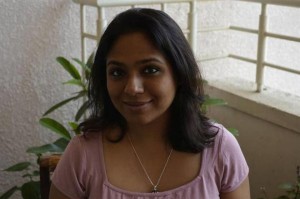Madhumita Bhattacharya says while she enjoys writing about different spaces, she doesn’t like getting carried away by setting either
Madhumita Bhattacharya’s Murder at the Temple (Juggernaut) opens on the evening of November 8, 2016. Kavya, a young woman, reaches a small shrine in Banashankari to find the hundi stuffed with notes and the priest dead. What follows are 24 breathless hours as Kavya opens up a can of worms rife with frantic jewellery purchases, money laundering and real estate deals. The 37-year-old Bengaluru based author talks of why she chose the digital space and the importance of setting in a novel. Excerpts
How did Murder at the Temple come to be?
This book started on the night of November 8, as I watched the rug being pulled from under the nation. A panel of officials spent an hour at a press conference repeating themselves, with no apparent clue as to the extent of the chaos it had just unleashed.
Over the next few days, it became clear that not all were equally afraid or helpless. Reports of illegal transactions at jewellery stores across the country grew, and I wondered about the mechanics of it all. Money was deposited in huge amounts in temple cashboxes, and I wondered how it could possibly be returned to the ‘rightful’ owners. How much was happening in the shadows – how much had happened already? The story practically wrote itself.
Why did you choose the digital space?
Speed was important for this one, and old school publishers are not known for quick turn-around times. So I felt Juggernaut would be a great fit. I reached out and they were fortunately very receptive and responsive.
Why a novella?
Also for reasons of speed; the action of the story takes place in 24 hours, and keeping it short and tight seemed the best way to ensure the pace of the narrative kept up with the breakneck speed of the story.
What are the pros and cons of setting the novel in a particular time and space?
On this night and day, it was not as much as a problem as it might have been otherwise. If you remember, in the days following demonetisation, there was a sharp fall in movement on the streets. Otherwise Bangalore traffic would have been a serious plot-killer — there is only so much you can do when you are stuck behind an auto at KR Puram for 45 minutes!
But I enjoy writing about different spaces. This is my first Bangalore book. Each of my books has been set in a different place, and only one of those had a fictional component. My greatest complement was when an old Bangalore hand told me Murder at the Temple captured the city well. It is something that makes me nervous, because I know how much I hate it when authors get their places wrong. I don’t like getting carried away by setting either, but I want just enough of it to set the mood.
Did you have fun with the different locations in Bangalore? Are there specific locations you selected? Why?
I love the chaos of wholesale markets, the old houses, the grand trees. But there is so much more – the dusty barren parks, the random inlets for water tankers… It is the small things that make the difference.
Does Bangalore lend itself easily to crime fiction?
Every place lends itself to crime! Every place has an underbelly – even the most idyllic rural locations have their own dirt, their own politics, their own passions. Crime fiction is a way to access that place of discomfort.
How different is Kavya from Reema?
They are both young women but apart from that, they have little in common. Kavya is lost and alone, Reema is supremely on top of things and connected to her family and her place in the world. Kavya is not a detective, she is saving her own skin.
Do you prefer the first person narrative or third person? Why?
I love both, but first person does leave you confined to the head of one character. In this book, I needed to be free to get into Samar’s head too. To me, they are both the protagonists of this novel.
What next?
I am working on something quite different — a crime novel that is not detective fiction. It is a difficult story for me to write, so I want to take my time.
source: http://www.thehindu.com / The Hindu / Home> Life & Style / by Mini Anthikad Chibber / November 27th, 2017
